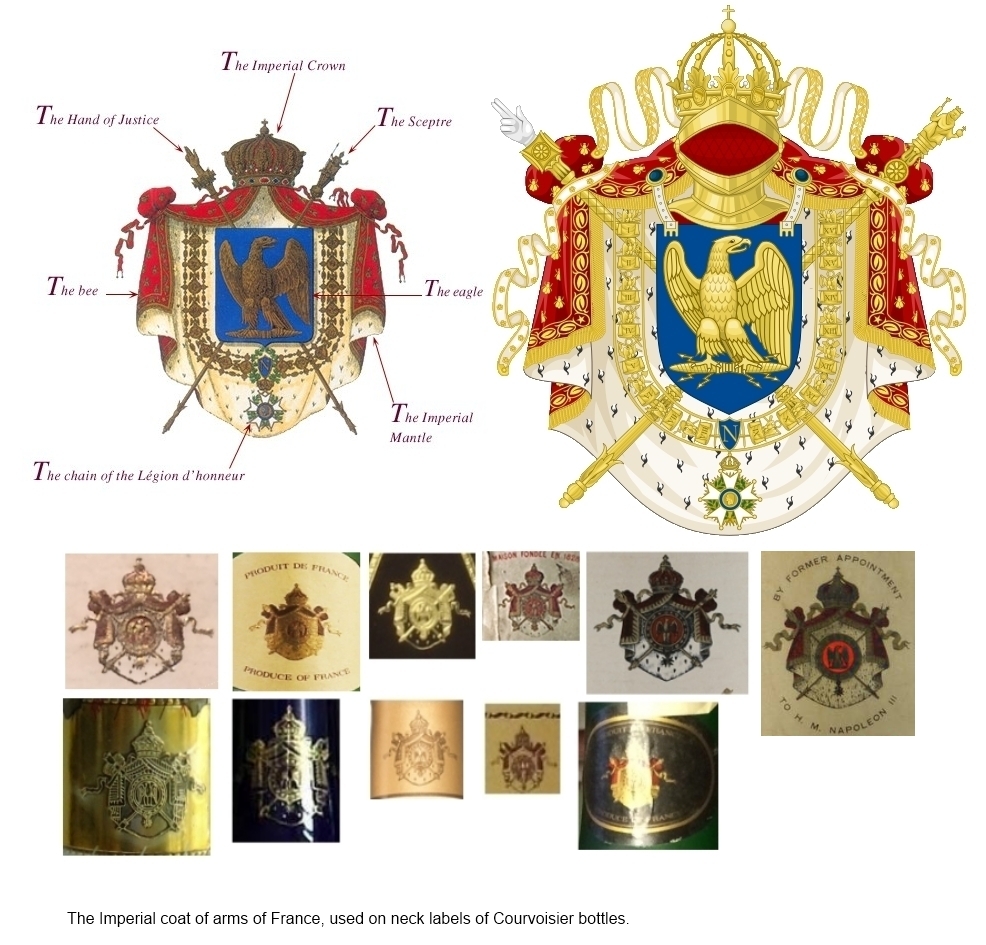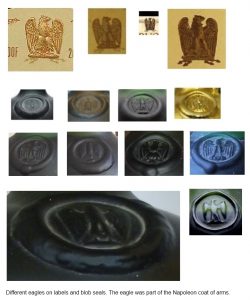Courvoisier bottle shapes and emblem’s.
Bottle shapes
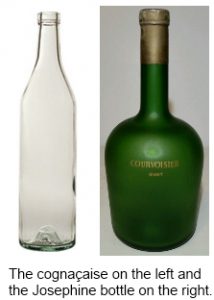 For a long time Courvoisier used cognaçaise bottle types, like all other cognac producers. But in 1952 they switched to the Josephine bottle. At first only for their VSOP but when they began introducing the VS quality – next to the three stars – around 1960 they used it for these bottles too. The name, of course, refers to Josephine de Beauharnais, born Tascher de la Pagerie, Empress of France and wife of Napoléon Bonaparte. The bottle form was perhaps chosen because of Josephine´s fondness of corsets, the bottle mimicking this shape. But it could also be inspired by the upside down balloon glass, widely in use in that period. After the redesign in 2015 by Suntory, they kept the shape for their VS quality, but the VSOP changed into a somewhat elongated type of the Josephine.
For a long time Courvoisier used cognaçaise bottle types, like all other cognac producers. But in 1952 they switched to the Josephine bottle. At first only for their VSOP but when they began introducing the VS quality – next to the three stars – around 1960 they used it for these bottles too. The name, of course, refers to Josephine de Beauharnais, born Tascher de la Pagerie, Empress of France and wife of Napoléon Bonaparte. The bottle form was perhaps chosen because of Josephine´s fondness of corsets, the bottle mimicking this shape. But it could also be inspired by the upside down balloon glass, widely in use in that period. After the redesign in 2015 by Suntory, they kept the shape for their VS quality, but the VSOP changed into a somewhat elongated type of the Josephine.
The Napoléon quality is still in a Josephine bottle too.
The XO´s were always in a drop-shaped bottle and still are today.
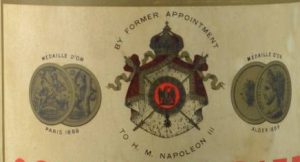 On the labels several embleme’s are used along with texts to match. The two medals are used for a long time. They refer to the winning of the gold medal in Paris in 1889 and in Algiers in that same year. Texts: Medaille d’or Paris 1889 and Medaille d’or Alger 1889.
On the labels several embleme’s are used along with texts to match. The two medals are used for a long time. They refer to the winning of the gold medal in Paris in 1889 and in Algiers in that same year. Texts: Medaille d’or Paris 1889 and Medaille d’or Alger 1889.
Napoleon and the imperial coat of arms
In the 1920’s it was Simon who 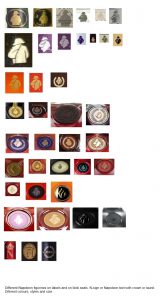 started to use the image of Napoléon for marketing purposes. They designed the silhouette of Napoleon and start putting it on small labels on the bottle necks. Through the years all these little figures of Napoléon have undergone a lot of changes in style, colour, size and background colour.
started to use the image of Napoléon for marketing purposes. They designed the silhouette of Napoleon and start putting it on small labels on the bottle necks. Through the years all these little figures of Napoléon have undergone a lot of changes in style, colour, size and background colour.
Napoléon III in 1869 bestowed on them the honourable title of “Official supplier to the Imperial Court”. Many years later – probably also in the 1920’s – they used the Imperial Coat of Arms of Napoléon as an embleme to announce that they were in the past chosen to be purveyors to the Imperial Court, with the text: by former appointment to H.M. Napoleon III.
Some bottles have the text: Fournisseur Breveté de S.M. l’Empereur.
The Eagle
The eagle in the Imperial Coat of Arms takes a central position. The eagle is used on its own on the main label and also on the blob seals on the shoulder of bottles.
The royal warrant
They also became the choice of the Royal courts of England, Sweden and Denmark. They start using the Royal Coat of Arms of England on their bottles. Different texts were used. After the dead of King George V (1936): by appointment, purveyors of cognac brandy to the late King George V. And some time after: purveyors of cognac brandy to H.M. King George VI. After the dead of King George VI (1952): by appointment, purveyors of cognac brandy to the late King George VI. This is used in some countries until the nineteen-eighties, since the British Royal Warrant was not extended by Queen Elizabeth.
On a number of bottles they have used the phrase: Fournisseur breveté des Cours Étrangiers.

